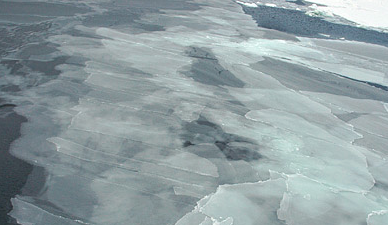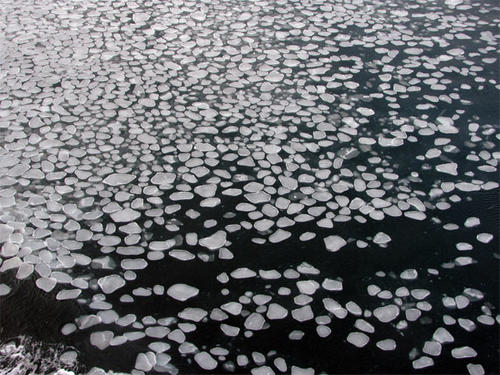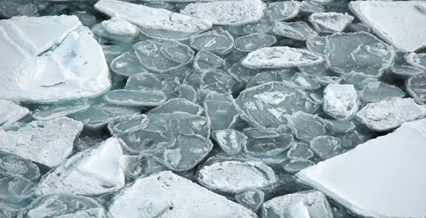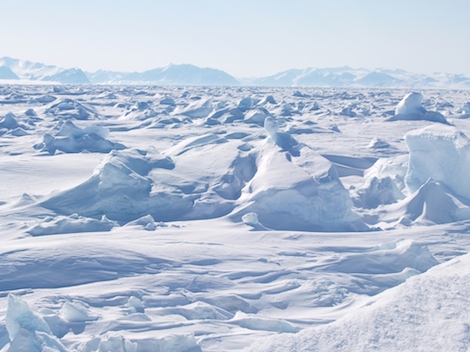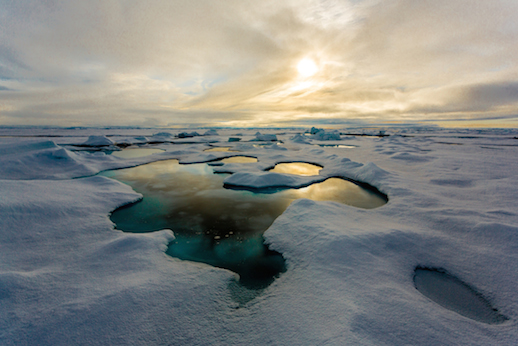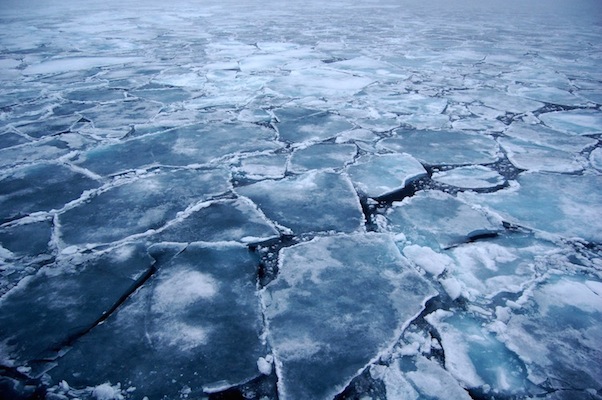
Ice formed and grown within one year, undergoing only one winter season. First Year Ice thicknesses are partitioned into thin (30-70cm), medium (70-120cm) and thick (>120cm). (Environment Canada, 2003)
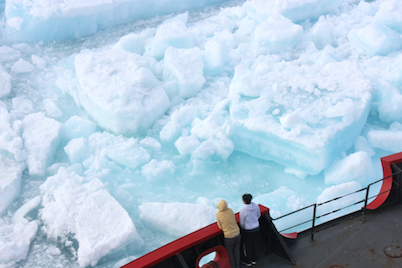
Ice that has persisted through two or more summer cycles of melt. Melting of surface layers may occur in the summer, with refreeze ensuing in winter. Within the Canadian Arctic, multiyear ice can reach thicknesses between 300-450cm. (Environment Canada, 2003)
Cycle of Ice Formation
The ice formation process begins as the ocean cools with the impending winter season. As the water reaches below freezing, small packets of drifting ice form (Frazil Ice). These packets of 3-4mm ice dispel salt contents to permit further freezing. The Frazil Ice continues to grow in two forms, dependent on the oceanic condition. In stagnant, still water, slim layers termed Nilas (Grease Ice) form while circular Pancake Ice is formed in rough water conditions. Following Grease or Pancake Ice formation, the individual parcels collide to form rafts. These rafts eventually develop into thick Ice Sheets (Scott & Simmon, 2009; NSIDC, 2013; Environment Canada, 2016).
As sea ice continues to develop from first year to multiyear ice, the ice salinity decreases as salt is dispelled into the surrounding ocean. Conequently, is summer, melt ponds of freshwater accumulate on top of warming multiyear ice sheets. If these sheets persist through the summer season, the freshwater washes out any remaining salinity from the ice sheet. This positive feedback system continues to decrease ice salinity through melt-freeze cycles (NSIDC, 2013).
Sea Ice Seasonality
The extreme seasonality in the Arctic climate is driven by the low angle of incoming solar radiation. Since this angle is smaller in the Arctic than near the equator, the energy is dispersed over a larger area, diffusing its effects. Additionally, solar days are very long in Arctic and very short (or non-existent) in Arctic winter. This variation creates a strong seasonal cycle in sea ice growth and melt. Sea ice growth begins in autumn as the atmosphere cools the surrounding ice and water. Throughout the winter season, the ice grows in extent and thickness, accumulating snow cover. As snow accumulates, the ice albedo increases, and more solar radiation is reflected (see Energy Flux Section). As less radiation is absorbed, cooling continues and more ice forms. In contrast, when the temperatures are warming in spring, the atmosphere heats up the ocean and ice, driving a positive feedback loop of sea ice melt. The amount of ice persisting after summer is dependent on the length and intensity of the melt season (NSIDC, 2013). Seasonal variation in sea ice extent ranges from 15 x 106 km2 in the winter to 6 x 106 km2 in the fall across the Arctic (IPCC, 2013).
Seasonal Sea Ice Melt Video from NASA Goddard Space Flight Center on YouTube.
Material on this page was provided by Maren Pauly and Tristan Mills, Department of Geography, University of Waterloo

